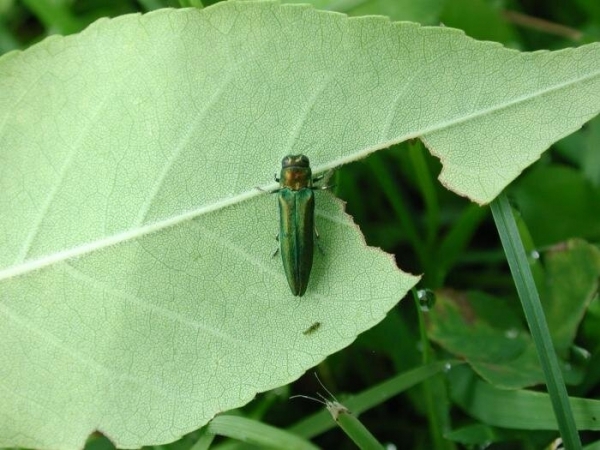LONDONDERRY — State forestry officials have confirmed a new emerald ash borer infestation after receiving a report in early October.
The Vermont Department of Forests, Parks and Recreation made that announcement in its recent update tracking the invasive beetle, whose larvae destroy the underbark of ash trees.
The discovery in Londonderry makes Windham County the eighth county in Vermont where the pest has been confirmed.
Barbara Schultz, the state's forest health manager, said a property owner discovered the ash borer in a tree and called in an arborist who reported the infestation to the state.
The emerald ash borer was first discovered in Vermont in Orange County in 2018. Since then, infestations had been confirmed in Addison, Bennington, Caledonia, Grand Isle, Orleans and Washington counties.
State forestry experts are tracking the pest and collecting information on vtinvasives.org.
Although the beetle spreads on its own, humans also can unintentionally help distribute it - for example, by moving infested firewood, Schultz said.
According to a recent state update, October is a non-flight season for the emerald ash borer, so the beetle is not mobile this time of year without help from humans.
In summertime, state officials cautioned visitors to campgrounds not to carry in wood from other locations but to purchase it nearby.
Other precautions forestry officials suggest on the website under the heading “Slow the Spread” include not transporting ash firewood that has not been heat-treated out of an infested area.
Schultz says that the beetle's spread is unpredictable. Many areas that are considered higher risk have not been found to be infested yet, while the insect has been discovered in other areas that were of little concern previously.
The adult beetle is about the size of a penny and is identifiable by its bright metallic green shell. Adult beetles exit ash trees upon maturity, leaving distinctive “D-shaped” holes in bark.
The emerald ash borer typically chooses to settle in trees that are stressed. It took nearly 10 years for it to turn up in Vermont after it was confirmed in Montreal in 2008.
However, abnormally dry growing seasons from 2014 to 2018 could be a contributing factor to recent infestations, according to the September 2019 Forest Health Report.
Though it is likely that most Vermont ash trees of this generation will die largely due to ash borer infestations, Schultz is hopeful for the next generation of trees.
“There does seem to be some level of resistant genes within the population,” she said. As a result, some ash trees are more resistant to the borer than others, so the state recommends letting ash trees grow rather than cutting them down.
State to introduce predator wasps
Vermont will soon be introducing another natural control measure that is already being used in other areas of the country.
“Biocontrols have been widely released at this point,” Schultz said, referring to the practice of using predator insects to target ash borers.
In this case, non-stinging wasps that feed on the emerald ash borer will be released in Vermont starting next year and state forestry experts are looking for potential release sites.
“The USDA has been working with other states and landowners to release these wherever EAB is found,” Schulz said.
Good locations for this experiment would be an acre or more in or near locations with visibly infested ash trees. Landowners interested in learning more to possibly participate should contact [email protected].
